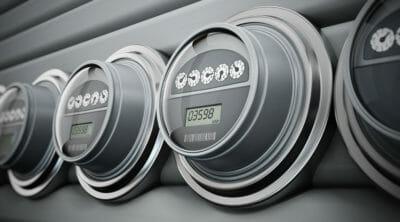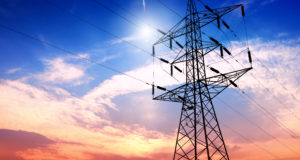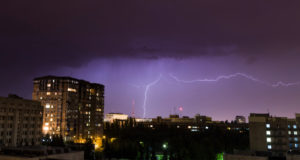
Nobody knows if the smart grid will actually work because it is a totally new technology that no one has ever tried before.
Big government’s plans to modernize electricity by creating a smart grid appear to be a recipe for disaster. Consequently, a grid such as this would be more vulnerable to hacking and sabotage.
A smart grid will be more prone to failure because it relies on the cloud – a fragile and complex network of data centers. Therefore, it would be more likely to suffer blackouts than the traditional system.
A traditional electric power grid distributes electricity from power plants to homes and businesses directly through a simple system. In addition, human operators control the traditional grid at a few central locations. The traditional power grid is less vulnerable to sabotage because it is low-tech.
What Is The Smart Grid?
A smart grid is a computerized system in which artificial intelligence (AI) would make the decisions. People call such a system the smart grid because it deploys so-called “smart technology.”
The control systems for this type of grid will be located on the cloud. As a result, they will be more vulnerable to hacking and software glitches. Humans might not be able to access or repair cloud-based systems quickly.
The hope is to optimize the grid’s performance and maximize profits. A smart grid is supposed to maximize performance by having AI send electricity to where it is needed most, or by selling power for the highest price.
The most noteworthy advantage to the smart grid is that it can harness electricity from a wide variety of sources. Those sources can include traditional nuclear or coal-fired power plants, roof-top solar panels, and micro-generators.
That means the smart grid is theoretically more robust than the existing grid. Unfortunately, the AI and cloud-based control systems add another layer of complexity that makes failure likely.
Dependable, Portable, Backup Emergency Power Supply
The Smart Grid Nightmare Scenarios
A smart grid can give rise to a number of frightening nightmare scenarios. Grid nightmares your family might face in the near future include:
- Sky-high electric bills that appear out of nowhere. Under an unregulated smart grid, an AI or algorithm might have the power to increase or decrease your electric bill at any time.
- Utility companies can program the smart grid to change rates suddenly and without warning. The cost of electricity might be $10 a day on Monday and $100 a day on Friday if demand increases.
- A grid utility would have the ability to shut your power off at any time. A smart grid AI might call you and tell you to pay your bill right now or it will turn off the lights.
- A far greater potential for sudden electricity shortages. The AI that runs a smart grid might automatically shift electricity supplies away from homes. The electricity would be sent to more profitable customers such as big corporations instead. Homes might be in the dark while the lights and registers stay on at Walmart.
- Hackers have already proven it is possible to take down the existing grid. The cloud-based grid would be far more vulnerable to cyber attacks because it operates through the web. A grave danger would be targeted attacks aimed at specific customers or certain kinds of users. Attackers might try to sow panic by shutting off power to certain businesses such as filling stations or supermarkets.
More Vulnerable To Sabotage
- A smart grid will make traditional low-tech sabotage easier and more effective. This kind of grid will be highly vulnerable to low-tech, traditional sabotage methods. Those methods include smashing computers, cutting wires, or bombing infrastructure.
- A major threat would be the destruction of internet infrastructure, which might cause a system crash. Attacks on the data centers that operate the cloud might bring down the smart grid.
- Another way to knock out the smart grid would be to attack the power sources for the data centers. In this case, cutting off power to the data centers would shut down the cloud and the power grid.
- Increased possibility of catastrophic failure because of more complexity. The smart grid will be a highly complex system. That means that there is a lot more that can go wrong with it.
- Equipment failures, software glitches, and human errors can be magnified throughout the whole system. A software glitch might shut off power to several states or provinces.
- There would be no backup available because there are no humans are on duty. The worst case scenario is that there would be no human operators available to switch power around and keep the system operating in an emergency.
- If the smart grid fails, it might take hours, days, or even weeks for human operators to take back control.
- Governments or utilities can use a smart grid to ration power. A grid like this can be used to divert electricity from low-population rural areas to cities where most of the voters live, for example.
- Nobody knows if the smart grid will actually work because it is a totally new technology that has never been tried before.
Conclusion
The bottom line is that the smart grid will probably be very unstable and unreliable. Fortunately, there is a portion of the power grid plan that can keep the lights on even if the whole system fails. Households and businesses can hook up their own off-grid sources of electricity and backup power systems.
Such systems will keep the lights on and technology working even if the smart grid itself is a failure.
You may also enjoy reading an additional Off The Grid News article: 8 Simple Ways To Live Off Grid On Less Watts
Or download our free 30-page report which discusses slashing your electric bill by up to 50%: How To Cut Your Electric Bills In Half
Do you have any additional thoughts about the smart grid and the danger it may pose? Let us know in the comments below.
 Off The Grid News Better Ideas For Off The Grid Living
Off The Grid News Better Ideas For Off The Grid Living



